I wrote this article in Japanese and translated it into English using ChatGPT. I also used ChatGPT to create the English article title. I did my best to correct any translation mistakes, but please let me know if you find any errors. By the way, I did not use ChatGPT when writing the Japanese article. The entire article was written from scratch by me, Saikawa Goto.
Introduction
Movies and books covered in this article

Three takeaways from this article
- General relativity and quantum mechanics are incompatible.
- String theory has the potential to merge general relativity and quantum mechanics.
- The ‘Warped Passages’ derived from string theory may be able to solve the “hierarchy problem”.
Self-introduction article


Published Kindle books(Free on Kindle Unlimited)
“The genius Einstein: An easy-to-understand book about interesting science advances that is not too simple based on his life and discoveries: Theory of Relativity, Cosmology and Quantum Theory”
“Why is “lack of imagination” called “communication skills”?: Japanese-specific”negative” communication”
Structure of This Document
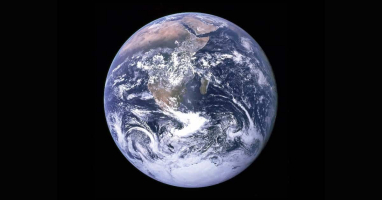
First, let’s take a look at the structure of this book.
This book is written by a scientist named Lisa Randall, who explains her hypothesis called “Warped Passages,” which she proposed in 1999. The hypothesis itself is only written in one of the six chapters. Chapters 1 to 4 explain the background knowledge, chapter 5 is the main topic, and chapter 6 is the summary.
And of course chapter 5 is certainly interesting, and the preceding chapters 1 to 4 are also remarkable.

As a prior knowledge, the book gives an overview of the major discoveries and developments in physics, such as General relativity, quantum mechanics, and string theory. Without a certain degree of knowledge of these subjects, it would be difficult to understand “Warped Passages,” which is the main topic of the book. However, if you read the book from start to finish, you can “more or less” understand the main topic in the fifth chapter.
I wrote “more or less” because the part where prior knowledge is discussed is very “difficult.”
But Lisa Randall is not responsible for this “difficulty.” It’s not that her explanation is poor and hard to understand, but rather that Lisa Randall is able to explain things so clearly that it makes one wonder.

In scientific books for the general public, they cannot help but to take the approach that “the latest scientific theories are difficult to explain, so they are explained in a simplified manner through metaphors and simplifications.” In scientific books for the general public, they cannot help but to take the approach that “the latest scientific theories are difficult to explain, so they are explained in a simplified manner through metaphors and simplifications.” If you want to truly understand these theories, it can still be quite difficult. But I felt that Lisa Randall is making an effort to convey difficult concepts as they are, without resorting to overly simplified explanations.
In that sense, this book is not only about Lisa Randall’s hypothesis, but also a great entry point for those who want to seriously learn about General relativity, quantum mechanics, string theory, and more.
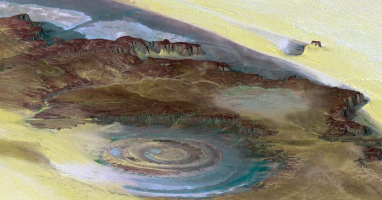
Understanding “Warped Passages”
Does String Theory Resolve the Conflict Between General Relativity and Quantum Mechanics?
In this article, I will not touch on the background knowledge of Chapters 1 to 4. However, it is difficult to explain without any mention, so let’s first understand where the hypothesis called “string theory” stands.
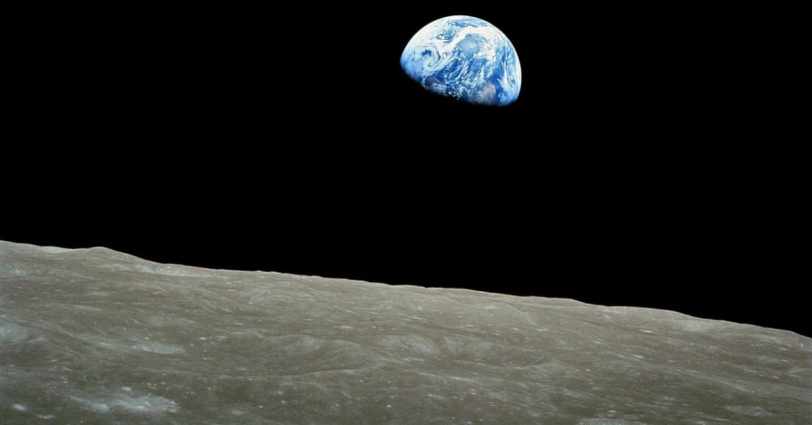
What is known as the treasure of 20th-century physics is “General relativity” and “quantum mechanics”. To explain in a very rough manner, “General relativity” is a theory that can be applied to “very large objects such as celestial bodies”, while “quantum mechanics” is a theory that can be applied to “very small objects such as atoms”.

“General relativity” and “quantum mechanics” are both very well-established theories. There are no problems applying General relativity to celestial bodies, nor applying quantum mechanics to atoms. General relativity is used in GPS, while quantum mechanics is used in electronic devices, and both are essential in practical applications.
However, there is a big problem with these two theories. The problem is that “there is a contradiction when applying General relativity and quantum mechanics simultaneously.” Although they are perfect theories on their own, applying these two theories at the same time doesn’t work well.

By the way, this is a side note. Einstein created the “Theory of relativity”, which has “Special” and “General” versions. A brilliant scientist named Dirac created equations that allow “Special relativity” and “quantum mechanics” to be applied simultaneously, which surprised the scientific community. However, no one has succeeded in merging “General relativity” and “quantum mechanics” yet.
This is where a hypothesis called “string theory” comes into play. Although it is called a “theory,” it has not yet been verified as correct by experimentation or observation. It should really be called the “string hypothesis,” but it is generally referred to as “string theory” (I don’t know how it is in the West, but at least it is in Japan).

“String theory” is a theory that developed from a completely different field than General relativity and quantum mechanics, but eventually came to be expected as “the only theory that can combine General relativity and quantum mechanics”. You can read more about the flow of this development in this book. “String theory” is an interesting topic that has sparked various discussions, as it has “experienced a splendid revival after a period of decline,” but has also faced criticism for being unverifiable by experiments and therefore unscientific.
Lisa Randall is a researcher in the field of particle physics, which includes “string theory.” Her proposal, “Warped Passages,” was also born from the concept of “string theory.” Therefore, in this book, prior knowledge about “General relativity,” “quantum mechanics,” and “string theory” will be explained.

What is the Important and Difficult “Hierarchy Problem” Related to “Gravity”?
In the process of learning about these background knowledge, a very serious problem related to “gravity” will be explained. This is the “hierarchy problem”. From there, the flow will lead to proposing “Warped Passages” as a model to solve this “hierarchy problem”.
So let’s talk about this “hierarchy problem” next.
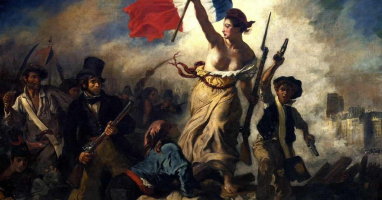
First, let’s explain the four forces that exist in the universe. There are four forces in the universe called “gravity,” “electromagnetic force,” “strong force,” and “weak force” (or rather, only these four forces exist). You may feel that “strong force” and “weak force” are strange names, but they are both official names.
As for the current “hope” of science, it is believed that “at the beginning of the universe, these four forces existed as one force, and gradually split into four as time passed.” However, this is just a hypothesis and still just a scientist’s imagination.
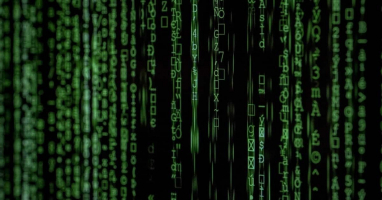

Einstein was the first to propose this idea, which was initially criticized as “ridiculous.” However, it is now considered the “Holy Grail” of science. In short, to unify the four forces is the very ultimate goal of science.
This idea, which was initially just Einstein’s fantasy, gradually gained supporters and eventually led to the creation of the “electroweak theory.” This theory proved that the “electromagnetic force” and “weak force” were the same force in the early universe, as the name suggests. With the announcement of the “electroweak theory,” it became clear that the unification of the four forces was not just a dream.

However, there is a big problem with unifying the four forces, and that is the “hierarchy problem.”
If the four forces were originally the same force, it would be problematic if the strength of each force was extremely different. For example, it would be quite difficult to believe and explain that a “creature with a body length of 1 meter” and a “creature with a body length of 100 million x 100 million meters” were originally the same living being. As expected, it is difficult to believe that they were once the same unless their body length is somewhat similar.
However, this is exactly the relationship between “gravity” and “strong force.” Surprisingly, the mass that determines the strength of “gravity” and the mass that determines the strength of “strong force” differ by as much as “10 to the power of 16 (100 million x 100 million) times.”

Scientists need to explain that “gravity and strong force were once the same” in order to unify the four forces. However, they must explain how such vastly different things could be the same force.
In this way, “gravity” is laughably weaker than the other three forces, and “this laughable weakness” is called the “hierarchy problem.”
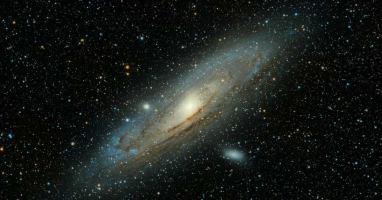
Explanation of “Warped Passages”
What is a “Brane”?
Now let’s explain “Warped Passages” from here. However, I must repeat that this article may contain terms that are difficult to understand for people who do not have prior knowledge of General relativity and quantum mechanics. Please bear with me on that point.
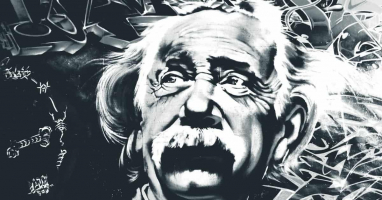
“Warped Passages” can be summarized as follows
There are an extra dimension with a 5th bulk sandwiched between two branes of different nature.

First of all, what is a “brane”? It’s something that’s derived from “string theory”. What I always imagine is a “waterbed mattress”, although it’s not something you see much these days. To describe it in a more general way, it’s like a “balloon”.

So, the “brane” explained in this book is actually a “4-dimensional brane.” However, since we can’t imagine 4 dimensions, let’s consider a “3-dimensional brane” by reducing one dimension. In this case, it’s like a balloon. The balloon has an internal space that is separated by the balloon itself, and there is another space outside of it. We will use this “balloon” image to explain, but it’s important to understand that it’s actually a “4-dimensional brane.”
The “brane” has the property of keeping forces and particles inside it. On the other hand, we can think that “the universe in which we live is inside the brane.” Since we humans are also made of “particles,” most things inside this brane, including us, cannot go outside of the brane.

In short, imagine that our universe (not just Earth, but the entire cosmos) is inside an incredibly large balloon.
The only thing that can pass through this “brane” is gravity. This isn’t just a convenient setup to solve a problem, but a property discovered in string theory research. The closed and open string properties are related to this, but that’s beyond the scope of this article.
In summary, forces and particles can’t leave the “brane,” but gravity can pass through it. It means that the existence of a “brane” with such properties is naturally derived from “string theory.

How to Solve the “Hierarchy Problem”

Next, let’s imagine a situation where two “branes” are facing each other. Instead of imagining a round shape like a “balloon”, please imagine a situation where two flat “branes” are placed facing each other, like two dominoes placed slightly apart from each other.

In this situation, can you understand the existence of the “5th dimension” between the two branes? As I have been repeating, each of the branes is in “4 dimensions”. And there is a “5th dimension” that goes from one brane to the other. It may be difficult to imagine it well, but anyway it is such a thing, and this “5th dimension” is called “bulk”.
Furthermore by considering the effects of General Relativity, it is understood that the space between these two branes, called the “bulk,” is warped like the mouth of a trumpet. This happens because the energy carried by the branes themselves warps spacetime, causing the bulk to take on the shape of a trumpet mouth.
This is the “Warped Passages” model proposed by Lisa Randall. By considering this structure, we can solve the “hierarchy problem” of why gravity is so weak. The reasoning goes like this.

In my previous explanation, I wrote that two branes are facing each other, but their properties are different. One is the “weak brane” that we live on, and the other is the “gravity brane.” The “gravity” that we feel on the “weak brane” is actually generated on this “gravity brane.”
As mentioned, the space connecting the two branes is warping like the mouth of a trumpet. In other words, even if a large gravity is created on the “gravity brane,” it exponentially decreases as it passes through the “warped passages.”

That’s why the explanation goes that the “gravity” felt on the “weak brane” is weak.
If this is true, the “hierarchy problem” that has been an obstacle to unifying the four forces would no longer be a problem. It is true that the “gravity” felt on the “weak brane” is extremely weak. However, the “gravity” originally generated on the “gravity brane” is as strong as the other three forces. Lisa Randall thinks in this way and is trying to solve the “hierarchy problem”.

Can This Hypothesis be Verified?
The problem here is whether “this hypothesis can be verified?” And this is also a question that is always directed at “string theory” itself.
It would be very difficult to verify “Warped Passages”. Even if the world had the shape that Lisa Randall said, we would not be able to perceive the existence of the “gravity brane” in a normal way.
This is because, as mentioned earlier, nothing can come out of the “brane” other than gravity.

There are various ways we can “see” or “observe” something. We can use our own eyes, or tools such as microscopes and telescopes. There are also methods to capture things beyond normal visible light such as infrared cameras and radio telescopes.
But in any case, to “see” or “observe” something, it is necessary for visible light or electromagnetic waves to hit the object and for us to capture the reflected light.


However, nothing except gravity can escape from the “brane”. Since visible light and electromagnetic waves cannot exit the brane, it is impossible to observe by visible light or electromagnetic waves on the “gravity brane” and capturing the reflected light.
However, it is not entirely impossible.
The “gravitational wave” that Einstein predicted and was observed for the first time after nearly 100 years has the same function as visible light and electromagnetic waves. There are areas in the universe where visible light and electromagnetic waves are difficult to reach, and plans are underway to use a “gravitational wave telescope” to observe things that have not been seen before.

If only gravity can leave the “brane,” there might be a possibility of capturing the “gravity brane” by “gravitational wave” and capturing its reflection.
However, it would be quite challenging even if it were possible.
In this way, “string theory” proposes a very innovative and attractive hypothesis, but it faces a significant problem of “not being verifiable by experiments.” However, the history of science is also a history of overturning impossibilities. We hope that someday humanity can undertake experiments to verify “string theory.”

Conclusion
I read a lot of popular science books, but I don’t think there are many written by active scientists themselves (most are written by people called science writers). And if a researcher writes a book, you might imagine it’s full of technical terms and difficult to understand, but that’s not really the case. General relativity and quantum mechanics themselves are very difficult, so the description in this book may also feel difficult, but Lisa Randall’s writing is very easy to understand. It’s a book that keeps the level of description as high as possible while making it as easy to understand as possible.

This book is a massive tome of over 600 pages, but I think it’s perfect for someone who wants to take a deeper dive into modern science. It’s not for acquiring trivial knowledge, but rather for those who want to take that first step in exploring the subject.

Published Kindle books(Free on Kindle Unlimited)
“The genius Einstein: An easy-to-understand book about interesting science advances that is not too simple based on his life and discoveries: Theory of Relativity, Cosmology and Quantum Theory”
“Why is “lack of imagination” called “communication skills”?: Japanese-specific”negative” communication”







コメント